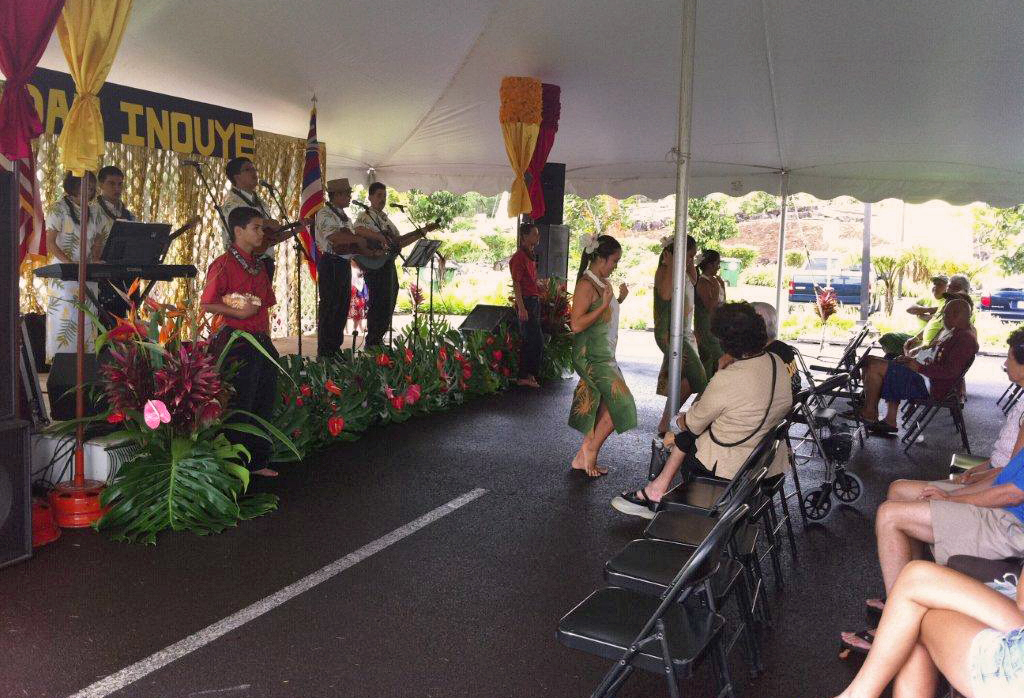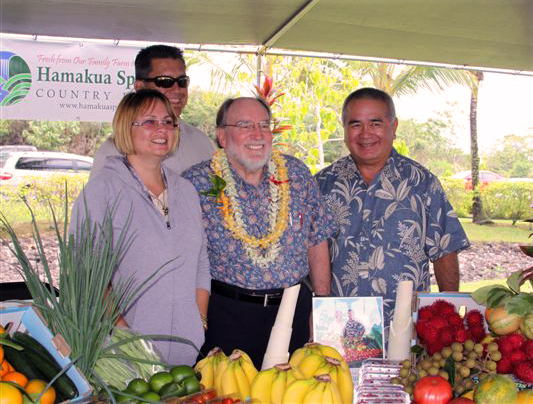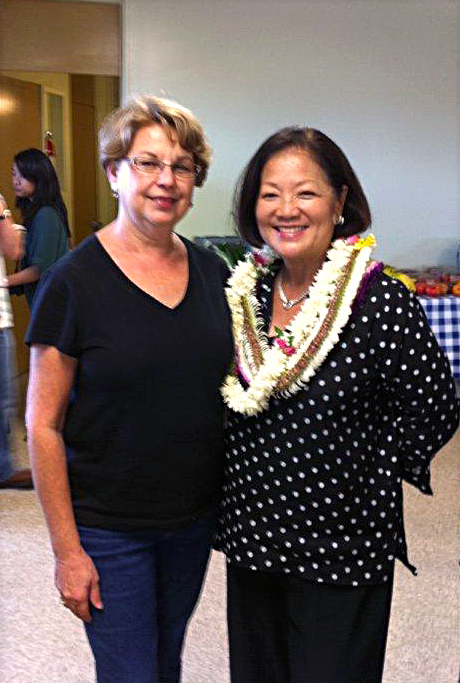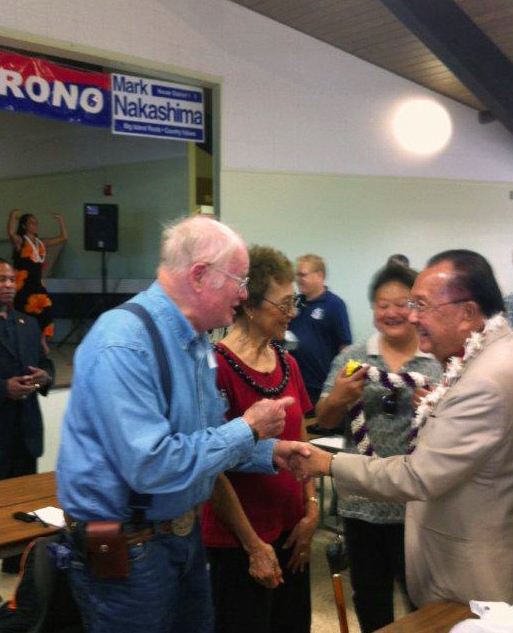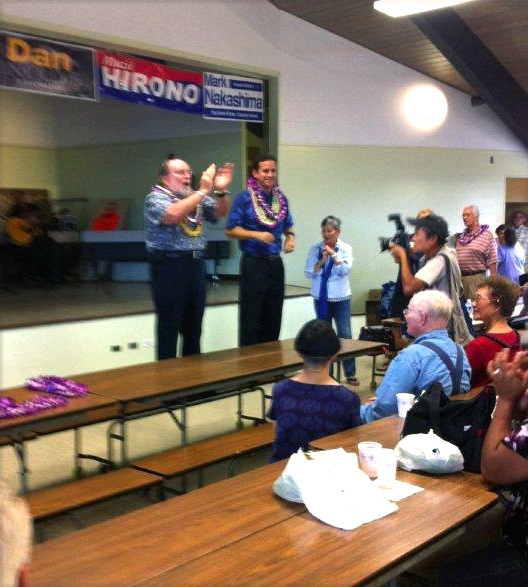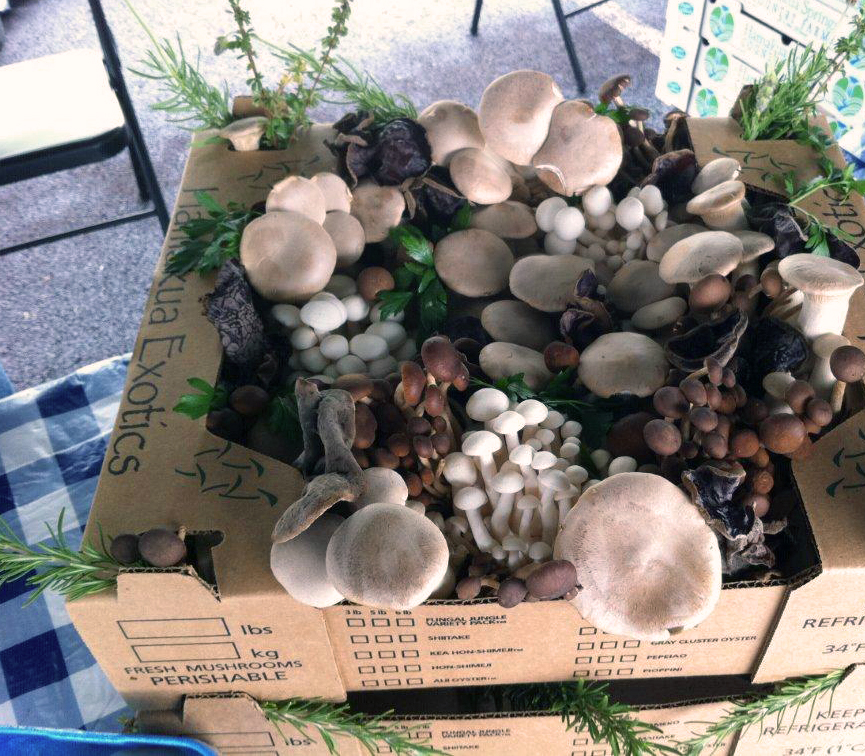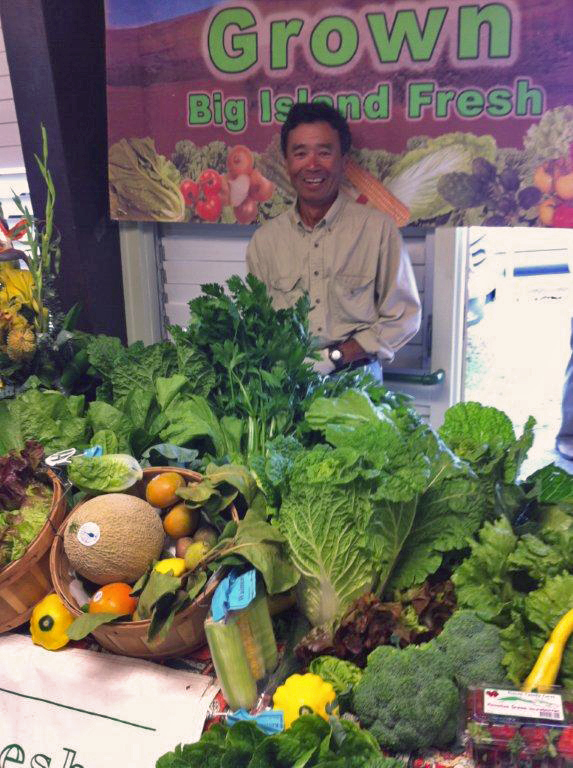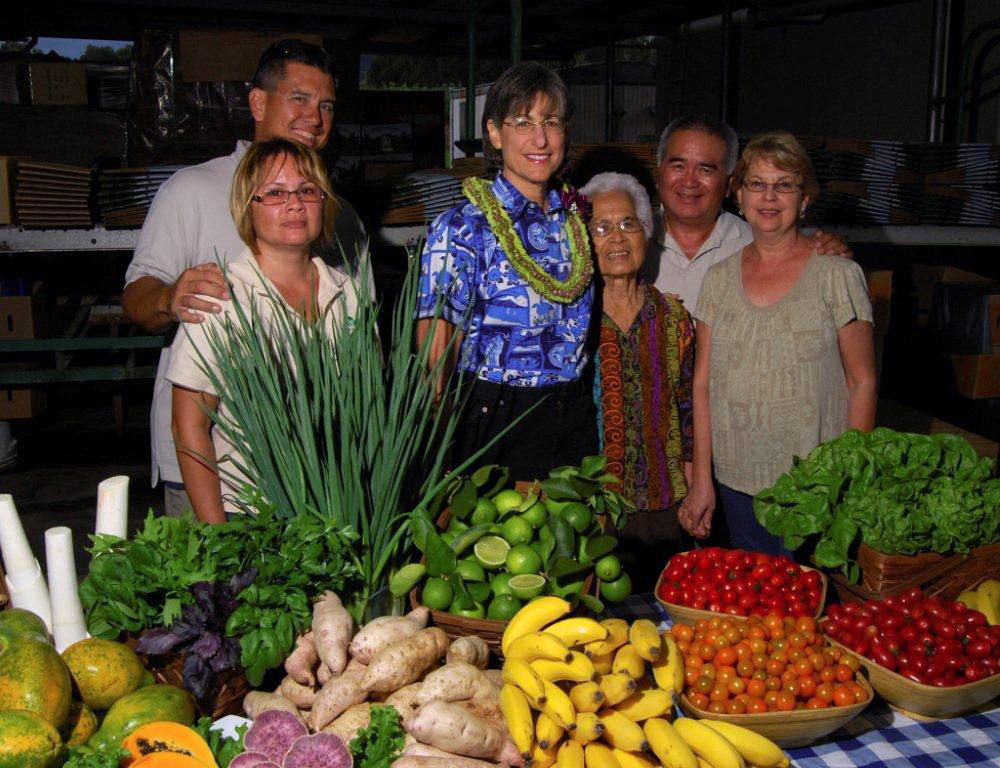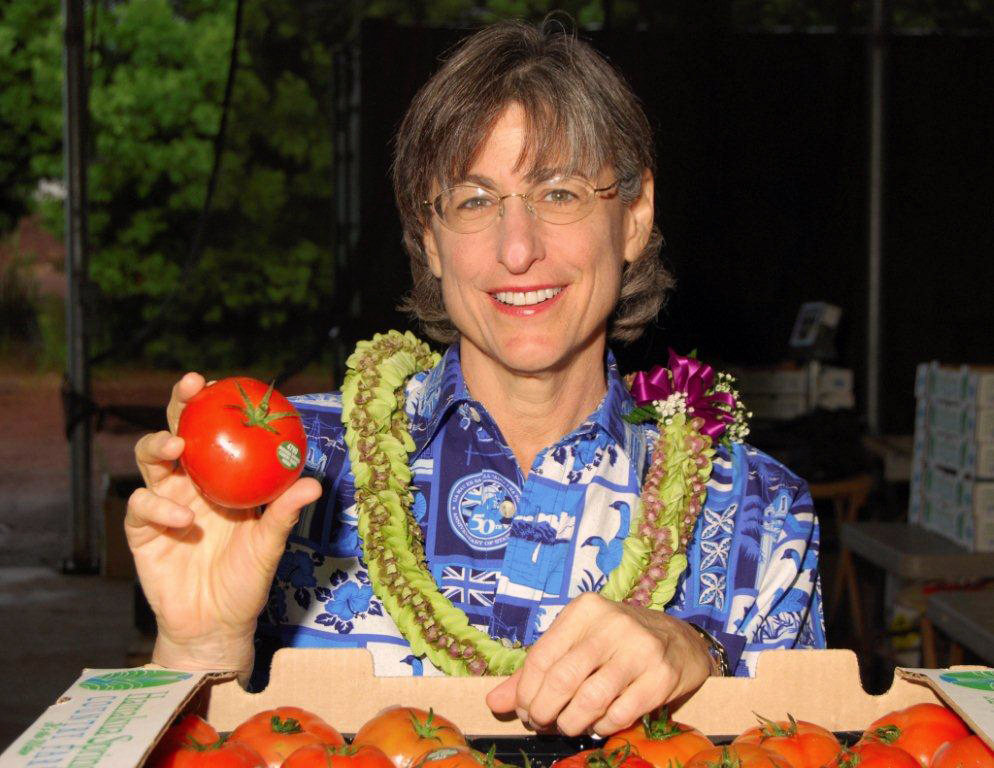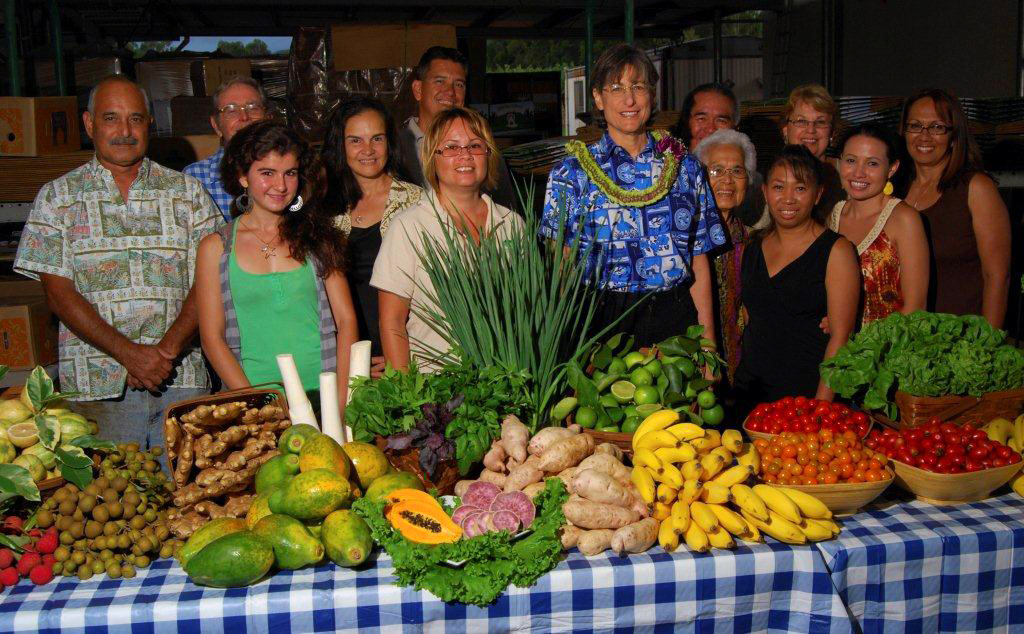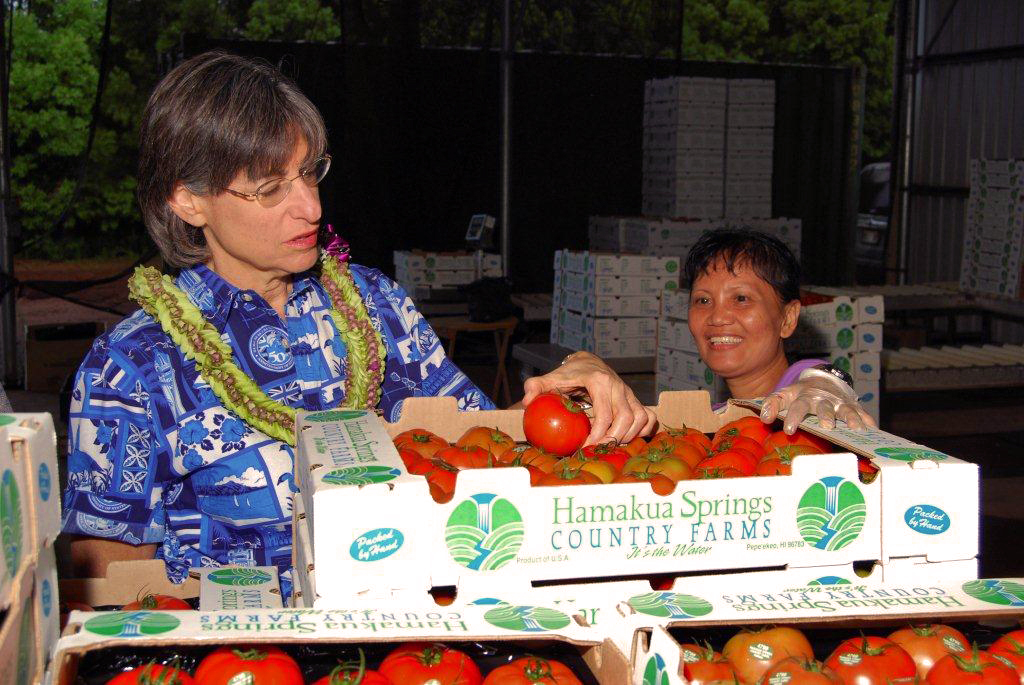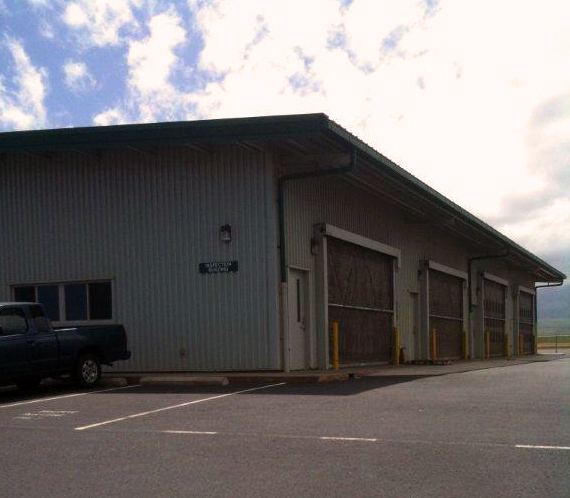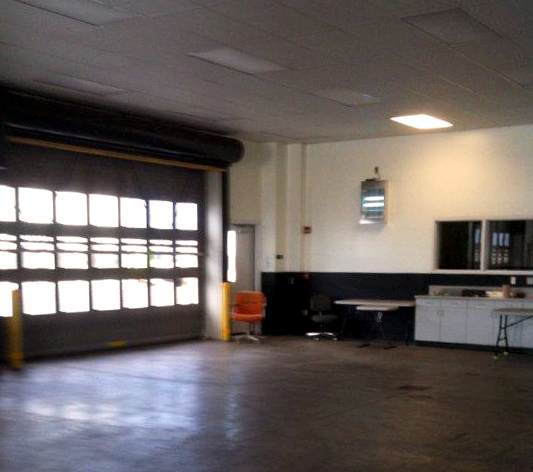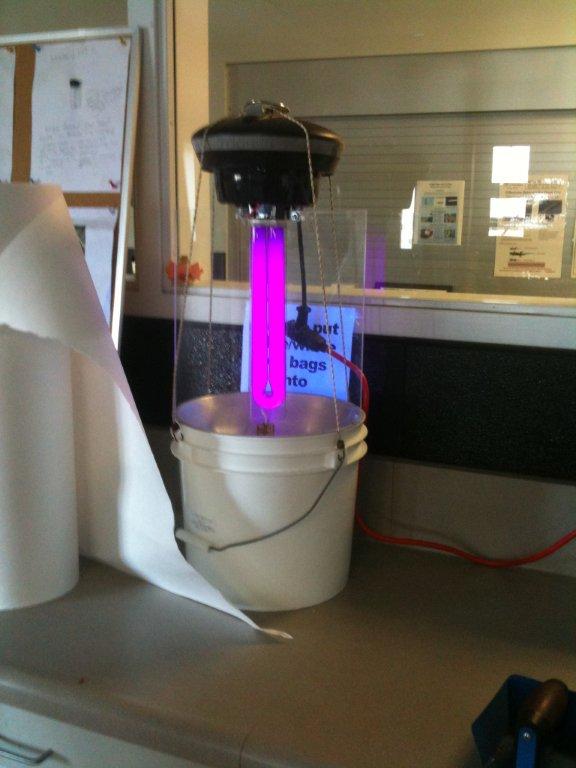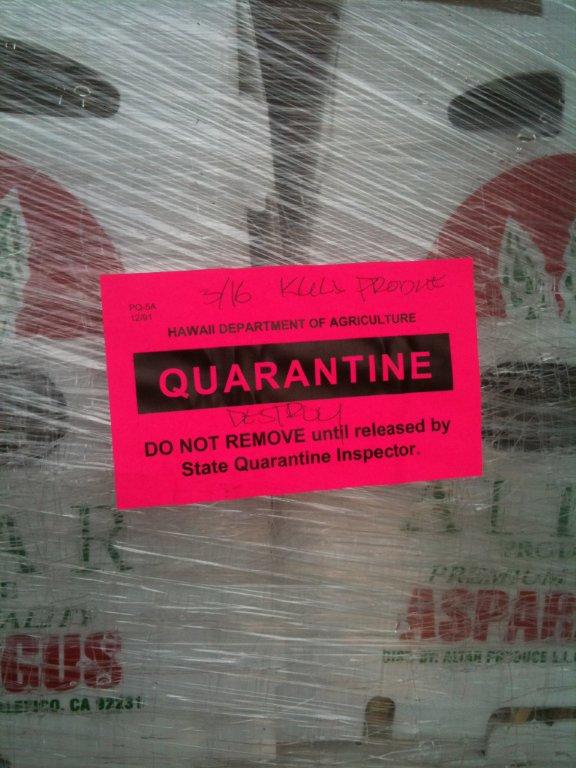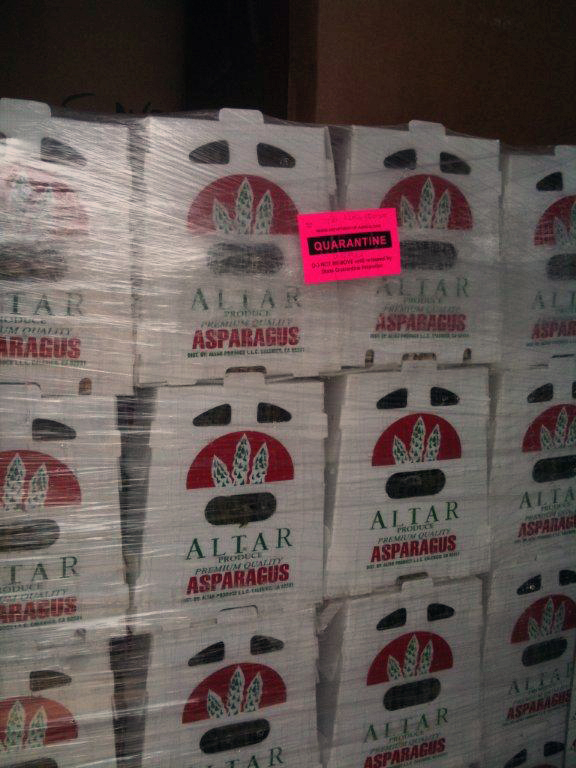We attended a large, two-part political rally this weekend. The first part was held at ‘Imiloa Astronomy Center in Hilo, and the second at a school cafeteria at Honoka‘a. We were asked to set up a display of our vegetables at both places.
Highlights were:
- Senator Inouye’s powerful support for gubernatorial candidate Neil Abercrombie
- Senator Akaka’s singing of the song “Where I live there are rainbows,” and
- Neil Abercrombie’s emotional speech talking about how our diversity is what unites us, not divides us.
The main people in attendance were Senator Inouye and Senator Akaka, Representative Maizie Hirono, Neil Abercrombie and Lieutenant Governor candidate Brian Schatz. Also present were Senator Russell Kokubun and Representatives Jerry Chang, Faye Hanohano, Clift Tsuji, Cindy Evans and Mark Nakashima.
Mayor Billy Kenoi introduced the speakers at ‘Imiloa, and Senator Dwight Takamine introduced them at Honoka‘a.
Neil Abercrombie has a very quick wit and strikes me as a really good guy. This is Tracy and Kimo with Neil and I.
In the next photo, that’s June and Maizie Hirono. I grumbled at Maizie’s chief of staff, Anne Stewart, about why geothermal was not mentioned in her campaign ad. Anne said it was inadvertent; because the folks who did the ad were separate from the campaign.
This is a picture I’ve wanted to capture for many years. It is of Senator Dan Inouye, President Pro Tem of the United States Senate, and Monty Richards, national officer of the Republican Party. These two men have been partners in the effort to transition Hawai‘i’s agriculture after sugar’s demise in the early 1990s. Monty, a knowledgeable farmer and rancher, worked with Senator Inouye to develop and administer the Regional Economic Transition Assistance Hawaii program (RETAH). They are good friends and often kid each other about belonging to the opposite political party.
They worked together to make the transition happen. And they were successful. Today ag is worth more than it was when the plantations shut down.
Governor candidate Neil Abercrombie and Lt. Governor Candidate Brian Schatz at the Honoka‘a rally. Senator Inouye gave a powerful endorsement of Neil Abercrombie.
Abercrombie gave a rousing and emotional speech about unity, trust and hopefulness. I had never felt so much emotion run through a room after a political speech as I heard then.
It made me feel like we are absolutely going to be successful in getting geothermal on line as the primary base power for the Big Island. At one point, I glanced over at Mayor Kenoi and felt like we were thinking the same thing, at the same time, about geothermal: “Not, no can. CAN!” And it made me feel that it will happen for the right reasons – because it is the right thing to do for the “rubbah slippah folks.”
Hamakua Springs set up a display as part of the festivities at the ‘Imiloa rally, as well as the one at Honoka‘a.
Bob Stanga had a nice assortment of the mushrooms they grow.
Roger Hirako and some of the best of his Kamuela Grown products.
Keeping the kids occupied.

